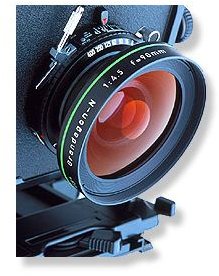Public Relations Photographer: More than Just Taking Pictures
For an emerging or existing company, a good marketing plan should be at the top of their priority list. Creating eye-catching advertising and showing the company along with its individuals in the best light possible is always a primary goal. A public relations photographer can take what may seem ordinary and mundane and make it exciting and beautiful. A PR photographer’s skills not only lies in being able to create thought provoking images, but in knowing exactly what pictures to take to get the desired effect.
Education and Skills
It stands to reason that a quality PR photographer would have a “good eye” and artistic talent. However, talent alone is not enough. While it certainly is possible to obtain whatever training is needed on the job, it is more advisable to obtain a formal education at an accredited university or college. A student may apply to an art college that has photographic courses to achieve a graduate degree, but many universities also offer courses in photography, which can lead to a degree.
Other courses recommended for those wishing to enter this field include marketing, advertising, business management and entrepreneurship classes. These courses can help a potential professional to learn what works and what doesn’t in the field of marketing. Since most photographers work freelance, courses in small business management and business startup should be considered for those who might not have run their own business. These will help a new business owner to avoid some of the pitfalls that come from running a business.
A photographer needs to obtain skills in contract writing, business plan writing, organization and marketing. He also needs to know how to hire the right model, technical and equipment skills, as well as dealing with clients. For a photographer selling their work to a client who will use it for advertising purposes, the PR photographer must also know and understand all laws surrounding copyright and creative content.
Equipment
Public relations photographers require the same kind of equipment as any professional photographer. This means a good SLR or digital SLR camera is at the top of the list. The brand of camera is up to the professional to decide what they like; however, make sure the camera has a high pixel count and interchangeable lenses for digital SLR cameras. Many experts recommend having at least a wide angle, zoom and a macro lens for projects. It is also recommended to have a lighting rig that is adjustable, camera lens filters, light meter for SLR cameras and plenty of memory cards.

Advantages and Challenges
For those interested in a career in marketing or advertising, becoming a PR photographer offers an interesting challenge to those creatively minded. Not only can a photographer take the photos needed for an advertising campaign, he can also help plan, design and lay out all content. This can also be a disadvantage because of the added pressure to get the right image in order to please a client. If a photographer chooses the wrong imagery and creates content a client disagrees with, it can hurt the photographer’s reputation.
However, an experienced professional will know how to position their models or client in his photos to achieve the desired image. To this end, he should interview the client and their marketing team to collaborate an image that will both suit the client and make them stand out from the crowd. This is not easy to achieve for a beginner, so patience is necessary to learn the trade to the best of his ability. To that end, it is wise to begin a career as an apprentice to an established professional before venturing out on his own.
Character Traits
The field of photography is widespread and covers a variety of fields. A professional can have his choice of wedding photographer, magazine and print publications, commercial and public relations to name a few. For PR work, a professional must have an outgoing, personable and flexible personality. He must not be afraid to offer his opinions, listen to his clients and come up with ideas of his own to present. He must also have an analytical and business oriented mind as well as having creative talent.
It is wise for those just getting into the photography field to have a thick skin and not take anything personally if a client or potential client rejects his work. A freelance photographer must always be on the lookout for new clients, potential jobs and projects to complete. This means, he must know, how to market himself to make any company feel he is the best for them.
References
-
Picture Credit
Large Format Camera Lens/CC/Creative Commons/Wikimedia Commons/Joanjoc/March 2005
APS Film/CC/Creative Commons/Wikimedia Commons/Yongxinge/July 2006
-
United States Department of Labor: Photographers 2011
Alan Howarth: Public Relations Photography “We’ve Got to Use That Pic”
